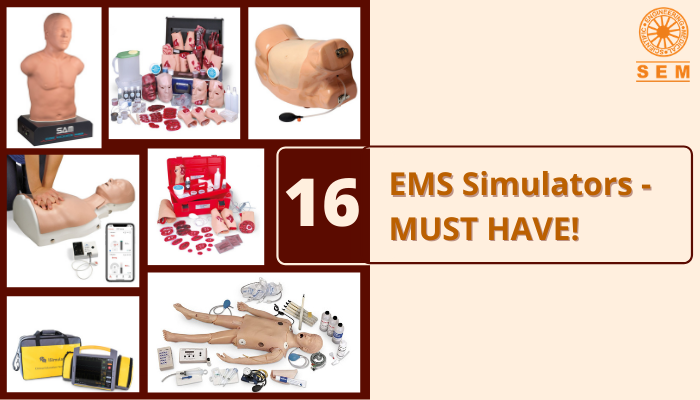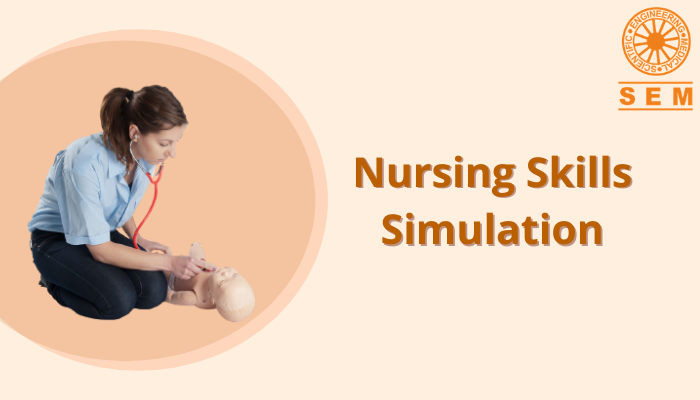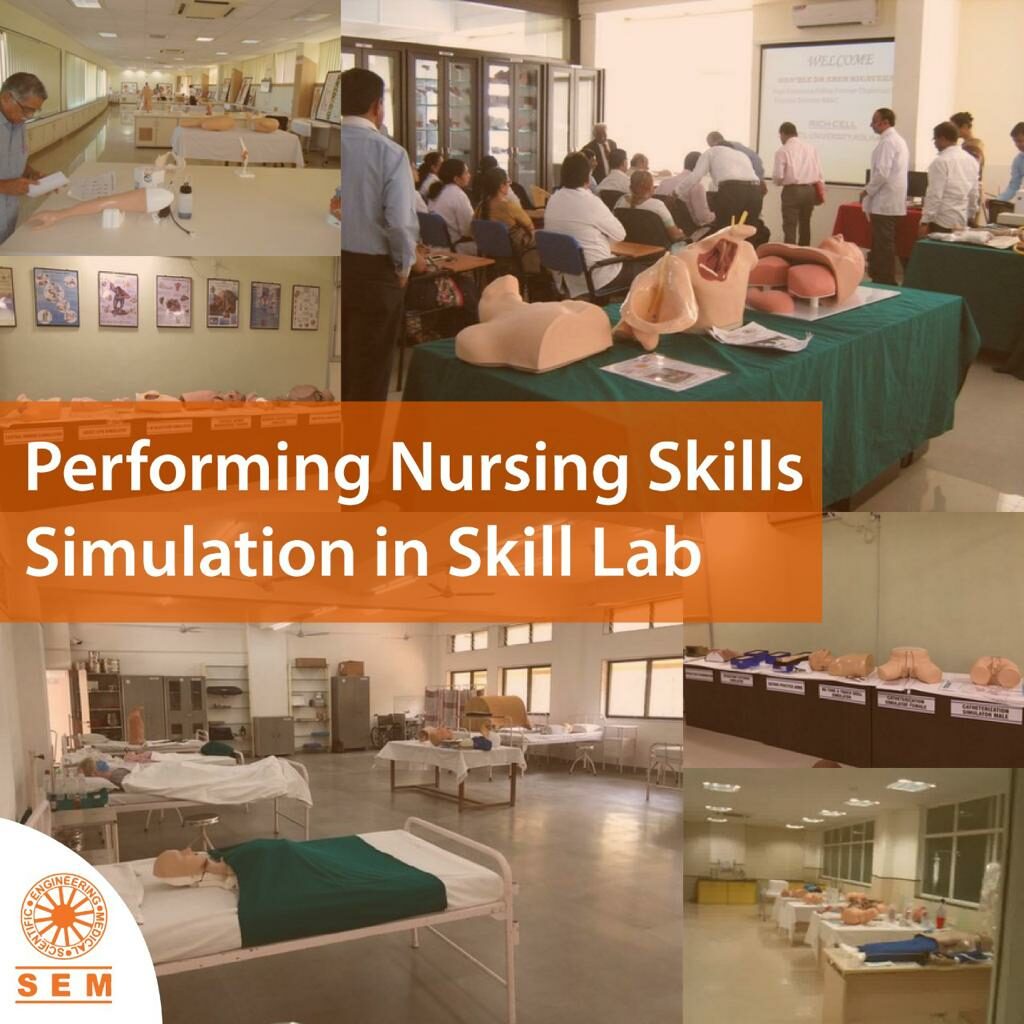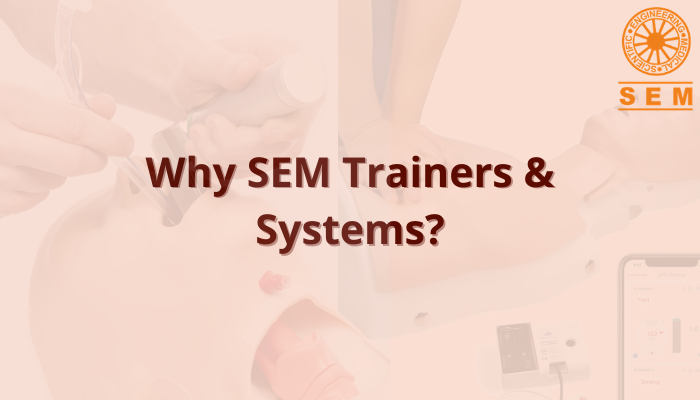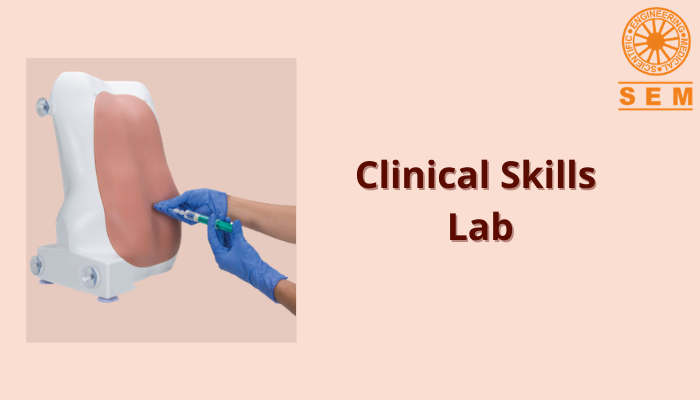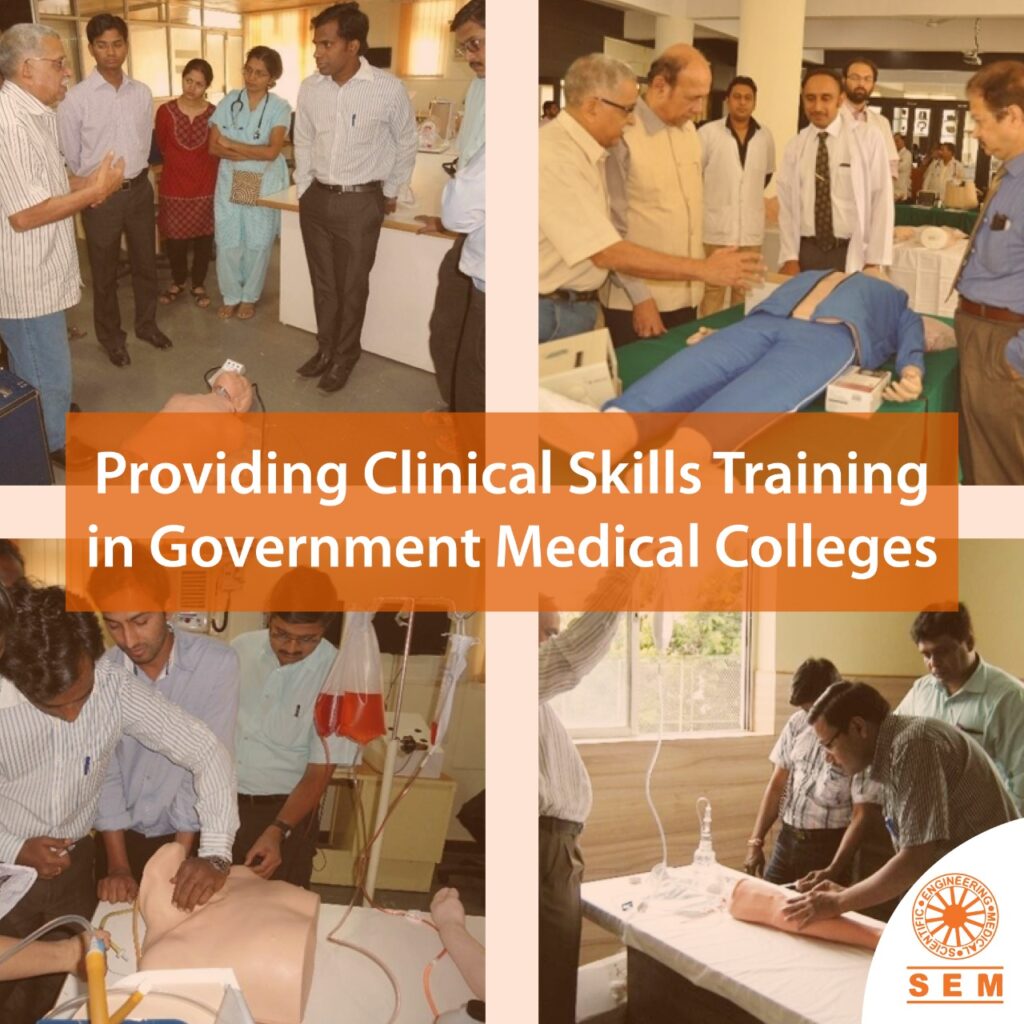EMS Simulation Training for Clinical Skills Lab | 16 Best Simulators to Get
An opportunity for simulation of clinical experience with life-saving Emergency Medical Services (EMS) can be provided to Medical Students. In EMS Simulation Training for clinical skills lab, the EMS simulators imitate high-stress emergency scenarios for education and training purposes where students can practice procedures and treatments realistically, but without the risks.
Benefits of EMS Simulators
Concisely, EMS simulators are medical simulation devices that mimic real medical environments and situations so that learners can experience the demands of a real hospital environment in a safe environment. Learners can afford to make mistakes and receive feedback. Simulators are used so that students can gain experience before stepping out into the real-world, and so that we can avoid risks to the lives of real patients from being operated on by inexperienced students. This also helps avoid inconvenience to real patients. Such hands-on learning helps students make the transition from theory to practice. Other than training, EMS Simulators are being used for assessment and evaluation, which can be a closing part of coursework. These simulators also come in handy with system integration and improvement. Furthermore, they are being used to assist health-system and facility research efforts.
SEM Trainers & Systems provide some of the best professional-quality medical products that you can use:
1. Simulated Patient Monitor – REALITi Go
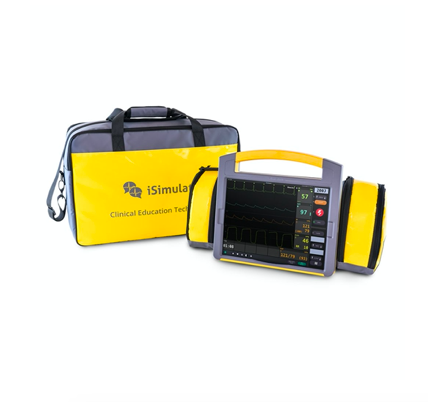
This is an ALS patient monitor simulator for paramedic and HEMS training in Advanced Life Support. This monitor is a great tool for students to learn and train on a realistic platform with a simulated monitor, 5 generic patient monitor screens, defibrillator, AED, and ventilator.
2. Simulated Patient Monitor with Debriefing & CPR Feedback – REALITi Pro
This is an advanced vital sign simulation system that you can use to run multiple scenarios anywhere- even in an ambulance or a helicopter. It comes with 5 simulated proprietary patient monitor screens for training on vital signs. It has live video streaming, CPR feedback, and simulated patient records. It looks, sounds, and functions like a real patient monitor.
3. SMART STAT Complete
This manikin offers simplicity of operation in a highly advanced trainer. It is a great add-on to your list of EMS Simulators. It can be used for physician training, nursing school training, hospital and clinic training programs, paramedic training, military battle field training, disaster response training, and a multitude of other medical training applications.
- Only high fidelity manikin that is operated with an iPad!
- Full-body, adult manikin
- Trains students in EMS, nursing, and trauma skills
- Provides experience with cardiac and medical disease care
- Anatomical landmarks
- Mobile and wireless
- Rechargeable
- No external programs or equipment necessary
- This simulator can function in the lab and in the field ascertaining diagnostic ability. Student performances records can be transferred to a computer, and chronological scenario event logs can be printed.
- Durable and can be placed in different indoor and outdoor environments
- Can be used with Microsoft Windows
- Has an on-board air compressor, and includes iPad® programming, storage for students’ performances, spontaneous breathing, pulses, blood pressure, carotid and femoral pulses, normal and emergent heart and lung sounds, 12 pulse points synchronized with the heart, EKG interpretation and cardiac treatment, IV and drug therapy, tension pneumothorax treatment, chest tube insertion with simulated drainage, and advanced difficult airway maintenance
4. Deluxe Child CRiSis™ with Advanced Airway Management
This is a resuscitation system for teaching life-saving techniques for children, with PALS (Pediatric Advanced Life Support) training capabilities. With all skill stations available, it simulates a 5 year old. It has airway management, intraosseous infusion, blood pressure arm, CPR, IV arm, defibrillation chest, and femoral access.
5. STAT Baby Advanced
This baby simulator includes all physiological features of a baby and helps develop student assessment skills by managing student information, creating scenarios, and tracking sessions for review and debriefing. This simulator in the list of EMS Simulators , satisfies every training need for post-neonatal care of pediatric patients.
6. Chest Drain Simulator
The torso presents as a patient lying on his back with
- Surgical access is lateral to the pectoralis major
- The arm has been removed for easier access and extended for anatomical relevance
- The ribs can be clearly felt below the surface of the skin
- Trainees can make an incision through the fleshy part, surgically dividing the tissue with blunt forceps until the plural cavity is clearly felt by finger insertion
- Complete finger rotation is possible, allowing the trainee to ensure that there are no obstructions before a drainage system can be introduced
- The popping effect of passing through the pleura is realistic and a unique feature
- A drain can be securely sutured into position onto this simulated flesh
7. Cricothyrotomy Simulator
The newly designed Life/form® Cricothyrotomy Simulator has been developed for learning and practicing the techniques necessary to perform needle or surgical cricothyrotomy procedures. Paramedics, EMTs, combat medics, flight nurses, anesthesiologists, and other emergency medical personnel will have the opportunity to strengthen their ability and confidence to perform or assist in implementing surgical airways.
8. Life/form® Pericardiocentesis Simulator – Advanced Trauma Life Support (ATLS)
This simulator is perfect for training for pericardiocentesis, and includes fluid reservoir bag, foot pump, surgical skin pads, subcutaneous surgical pads, nurse training pads, pneumothorax pads, blood powder, simulated pericardium, IV bag and a hard carry case.
9. Pneumothorax Training Manikin
Recommended by EMT (Emergency Medical Training) instructors, this model permits instruction of the delicate procedure for successfully managing chest wounds in which a collapsed lung interferes with the victim’s respiration and blood flow.
The model accepts needle and thoracotomy in the second intercostal space, in the mid-clavicular line, the fifth intercostal space in the mid-axillary line. A realistic training aid to practice proper needle insertion which enables built-up air pressure to escape the thorax.
10. Truman Trauma-X | Trauma Manikin | ATLS | Airway Management & Resuscitation Skills
The Truman Trauma System offers an anatomically correct simulated human torso designed for trainees to practice several surgical procedures together with the renowned AirSim head for training the full range of airway management and resuscitation skills. The Truman Trauma System also allows the use of replaceable tissue sets that allow each learner a life-like & unique surgical experience.
Skill Development:
- Chest tube insertion: recognition of correct position, surgical incision, blunt dissection through chest wall, perforation of pleura, and finger sweep
- Needle Decompression of tension pneumothorax
- Cardio Pulmonary Resuscitation (CPR)
- Needle and Surgical Cricothyroidotomy
- Airway Management Skills including OP and NP airway tube insertion, tracheal intubation, bag valve mask techniques, supraglottic airway insertion and ventilation
- Percutaneous Tracheostomy
- Identification of tracheal deviation and jugular vein distension which are warning signs attributed to tension pneumothorax
11. Advanced Casualty Simulation Kit
This simulation kit helps train bandaging and patient care skills for more complex wounds. It has an open amputation, a compound fracture of humerus, a compound fracture of tibia, a sucking wound of chest, and a gunshot wound of palm, along with 24 stick-on lacerations and open fracture wounds. It also comes with makeup accessories.
12. Emergency Medical Treatment (EMT) Casualty Simulation Kit
This simulation kit simulates disasters like bus accidents and building explosions, and attempts to address a wide variety of training situations. It includes wounds, fractures, lacerations, amputations, burns, makeup accessories, and even blood powder for simulated blood!
13. AED Trainer Plus 2
This trainer simulates shock delivery (without high voltages) to familiarize responders with AED devices, and has 10 training scenarios to simulate sudden cardiac arrests.
14. Basic Life Support Simulator with Feedback
This high quality and economical AHA compliant BLS manikin is a complete solution to train, monitor, analyse and debrief CPR performances. The manikin connects with the app using a strong and reliable Bluetooth connection – no need to set up a wireless network.
The Instructor App provides a detailed performance review of up to six manikins at a time while the Student App enables trainees to directly see and monitor their CPR performance in real-time.
The CPR apps provide feedback for:
- Compression (depth, recoil, and rate)
- Breath (volume)
- Hands-off time in real-time
- Feedback and evaluation meet the standard of the latest guidelines of the American Heart Association (AHA) and the European Resuscitation Council (ERC).
15. CPR CPRLilly PRO+
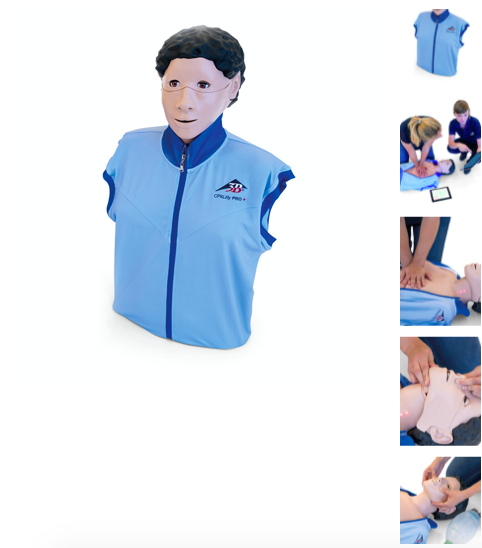
The new Quality CPR training manikin offered by 3B Scientific enables instructors and healthcare providers to measure, monitor and analyze the CPR performance of up to 10 trainees at a time. CPRLilly Pro+ helps instructors increase effectiveness and efficiency in their CPR courses by connecting with the free CPRLilly App on tablet to follow the CPR performance and deliver objective feedback leading to Quality CPR training (App available on Apple and Google play). It also enables trainees to see and monitor their own performance in real-time with the student view of the App. LED lights located directly on manikin’s neck provide direct CPR feedback and indicate correct compressions parameters (depth, release and rate).
16. SAM II® Student Auscultation Manikin
Auscultation is an essential clinical skill needed to assess and monitor patients’ conditions. With the Cardionics SAM II Student Auscultation Manikin, teaching and learning this skill becomes even more versatile and economic. The SAM II trainer can be used with any stethoscope. All sounds and videos are recorded from live patients for students to experience a life-like simulation. Users can also create and save their own case videos.
SAM II Student Auscultation Manikin is used in teaching and learning heart, lung and bowel sounds. When connected to the laptop (included) with the pre-installed software, a variety of sounds, videos and lessons recorded can be accessed.

